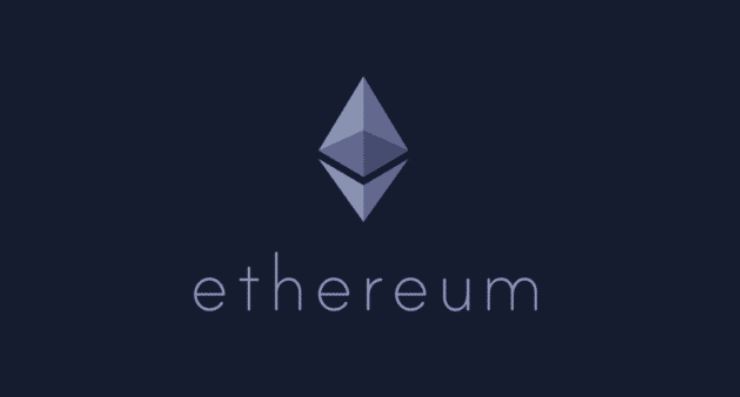Kik’s Kin Coin: Rethinking the Attention Economy

What is KIN Coin?
The Canadian social media company, Kik, made waves last year when they announced they wouldn’t be pursuing another round of venture capital. Instead, they executed an ICO that raised $98 million and put Kik on the map as a leading voice in anonymous, decentralized social media. The result of that ICO, Kin Coin, saw a massive spike in interest in January when the markets were flying high. Since then, its value has leveled off, but at a higher level than prior to the spike.
The idea behind KIN is allowing content creators and consumers to transact directly instead of relying on advertising revenue to monetize content creation. KIN has been in development since the successful ICO. It’s an ERC-20 token currently, but plans to integrate the token into the Kik app later this year will involve atomic swaps with an analogous Stellar token for scalability.
This article has everything you need to know about Kin Coin. We’ll cover the background, including more information about Kik for those unfamiliar. We’ll also look at the roadmap and trading history for the token. Let’s dig in.
How Kik Works
To understand the context for Kin Coin’s launch, it’s helpful to look at Kik, the social media company launching Kin Coin. Kik’s motivations for launching the coin are part philosophical, part financial, and probably part marketing ploy.
Kik is an app and social media platform that has over 15 million monthly users. Its user demographic skews younger. Most users are between the ages of 13-24. According to 2017 research from Kik, 33% of U.S. teenagers use Kik Messenger.

When you use Kik, you can send messages to your friends. However, you can also share videos, sketches, web pages, audio files, and other media. Major brands also have Kik profiles you can interact with and there are over 20,000 chatbots that can make jokes, order pizza, or share the latest celebrity news.
The biggest selling point for Kik is anonymity. You don’t need to verify your identity or phone number in order to use the service. You just need to provide an email address and a name to sign up. Privacy advocates have praised this choice as a decision against monetizing user data. Social media giants are known to hoard information about users, and Kik is largely defying that trend. Kik doesn’t retain any account information and messages/media between Kik users get deleted from the company’s servers after they’re sent.
However, Kik has also come under fire for identity verification and security. Since Kik caters to teens, critics worry about the protections in place to guard minors against unwanted content or outright fraud/abuse. Kik believes its users are smart enough to know what to do on the platform, and it largely refuses to sacrifice anonymity and privacy for the sake of security.
Rewarding Creators Directly
Kik’s latest effort has been allowing users to reward creators directly. Today’s digital content and social media companies monetize their websites using advertising. This model requires that these companies go after economies of scale, adding new users quickly. They also want new users to spend as much time as possible on their platform so they can maximize ad views and therefore revenue.

The leadership at Kik believes this trend toward the attention economy is a mistake. Their philosophical argument for creating a cryptocurrency is that advertising and attention seeking is cheapening the content ecosystem and our relationships. Using Kin Coin, they hope to enable consumers to pay creators and developers directly. This crowdsourced patronage is an important trend in social media. We’re seeing similar projects that have gained traction with the likes of Kickstarter or Patreon. These services allow people to pay creators directly, without the need for advertisers.
Kin Coin takes it a step further by integrating the payment directly into the platform. You’ll be able to buy or support the creators of written content, art, video, games, chatbots, and digital collectibles all within the app. In this way, Kin Coin makes Kik similar to Steem. The difference is Kik has an existing audience and is home to all kinds of multimedia content.
Before launching Kin Coin, Kik tested whether users would actually transact in tokens. From 2014 to 2016, they ran a test with Kik points. These were internal tokens, not backed by a blockchain and untradable outside the app. Still, at the beginning of the experiment, over 300,000 Kik points transactions took place per day. By the end of the experiment, that number had climbed to 2 million. There’s clearly a market for tokenization and rewarding creators directly.
ICO
Kik needed further funding in 2017. Instead of raising money from venture capitalists, they decided to launch an ICO to create the token behind their new rewards points system.
The token sale for Kin Coin was a success, raising $98 million in September 2017. The sale included over 10,000 people from 117 countries. Unfortunately, Canadian citizens were not allowed to participate, and Kik is a Canadian company. Some argue this dampened demand and contributed to the ICO not reaching its hard cap of $110 million.
A total of 10 trillion KIN will exist, of which 750 billion are currently in circulation. The token launched on Ethereum.
Launch on Kik
Kin Coin will launch on Kik later this year. The idea is for monetization to integrate seamlessly into the app. Users should be able to reward creators simply from their wallets with a few taps. Kin Coin is designed to be mobile-first, and a wallet app will arrive in the coming months as well.
A few test users can use Kin Coin right now on Kik. The only thing you can do so far is buy some custom digital stickers for use in chats. Expect more features upon launch later this year.

Over time, the idea is to allow other digital services and media applications to also integrate KIN. It won’t be exclusive to Kik. However, Kik will be the first company to launch Kin Coin integration.
Moving to Stellar & Dual Chain Compatibility
Kin’s developers have expressed misgivings about Ethereum’s scalability for the number of transactions they anticipate on Kin. Kin would need well over the 10k transactions/day limit that Ethereum imposed to avoid network slowdowns. In response to the transaction limit, the developers initially considered moving the whole project over to Stellar. However, the liquidity of ERC-20 tokens is hard to find elsewhere.
The result is a hybrid system where Ethereum provides liquidity while Stellar handles transactions. When you buy KIN, you’ll be purchasing an ERC-20 token. However, that token will be linked to a Stellar token as well. When you want to transact using the Stellar token, atomic swaps will lock the Ethereum token so it can’t be used. In the same way, when you sell the Ethereum token, atomic swaps will lock the Stellar token for its new owner.
Kin Foundation
The Kin Foundation exists independent of Kik. It aims to be the nonprofit advocacy arm for open tools for digital communication. Eventually, the goal is for Kin to serve as a currency for a whole ecosystem of communication tools, not just Kik.
There’s not a lot of information on the Foundation’s website about who is running it or how governance works. Over time, we’ll see if the Kin Foundation differentiates itself from Kik or just serves as a puppet for Kik’s broader goals.
KIN Trading History
KIN’s value decreased following the ICO as hype died down. In January, KIN rode the wave along with much of the cryptocurrency market to an all-time high. Since January, the price has fallen, but never to pre-January levels.
Where to Buy KIN
You can earn KIN for doing tasks on Kik or creating content once the integration is live later this year.
To buy it now, you’ll need to visit an exchange. Bancor, EtherDelta, Mercatox, HitBTC, and IDEX are your top options.
How to Store KIN
KIN is an ERC-20 token, so you can store it anywhere that accepts Ethereum. MyEtherWallet is a good option for paper storage. Of course, a Ledger Nano S hardware wallet is the gold standard for security.
Conclusion
Kin has the backing of a major startup with a large active user base. This is an interesting opportunity to see how well crypto integrates with an existing community, especially a younger community who might not care about crypto. They just want things to work well. Solving the problem of giving crypto a great user experience is an important step to making crypto useful. If Kik can figure that out with the Kin Coin then this will be an interesting project to follow.
“This article is originally published at CoinCentral.com”:
https://coincentral.com/kiks-kin-coin-rethinking-the-attention-economy/











Responses